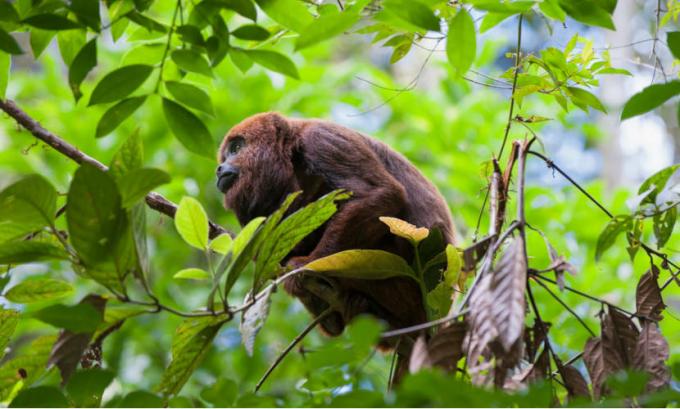monkeys they are animalsmammals belonging to the order of primates. Commonly, the term monkey is used to refer to all primates, however, it is more accepted to name monkey only some representatives of this order. The primate order is divided into two suborders Strepsirrhini and Haplorrhini. In the first, lemurs and lorines are grouped, while in the second, we have monkeys, tarsi and humans as representatives.
Monkeys, in general, have a body covered by hairs, which vary from one to another. species to another, and have opposable thumbs, which help them manipulate objects. Monkeys are very important to the environment, participating in food chains of the regions in which they live and also helping in the seed dispersal. Currently, many species of monkeys are threatened with extinction. Among the threats to these animals, we can mention the destruction of the habitat, a pollution, hunting, animal trafficking and climate changes.
Read too: Difference between humans and other animals
General characteristics of monkeys

monkeys are animals mammals, therefore presenting hairs and mammary glands. You hairs cover the animal's body and they have different shades, depending on the species we are analyzing. The golden lion tamarin, for example, has fur that varies from golden to golden-red, while the black-faced spider monkey has black fur.
Monkeys are animals belonging to the group of primates, showing, therefore, some characteristics of this group. Are characteristics of primates frontally positioned eyes, well developed cerebral cortex, omnivorous diet and presence of opposable thumbs. This last feature allows the thumb to touch the surface where the fingerprint is located on the tips of all four other fingers. This aids in object manipulation.
There are arboreal monkeys, but there are also species that live in the ground. In general, most monkeys are more active during the day and live in packs, which have social behavior.
examples of monkeys
As we have seen throughout the text, the term monkey is used to refer to different species. Next, let's meet some animals popularly called monkeys.

Capuchin Monkey (Cebus apella): it is an animal that lives in groups, which can reach up to 30 individuals. A striking feature is the fact that this species has great cognitive ability, greater than many other species. They can live up to 40 years of age in captivity. They weigh between 2.5 kg and 4 kg, and have a tail that helps them hang from trees. They are omnivores.

Howler monkey (Alouatta howler clamitans): it is a kind of diurnal habit that lives in groups and presents an arboreal habit, being rarely seen on the ground. To move through the trees, they use their tail. They are able to emit vocalizations, which are important to mark territory and organize their group.

White-fronted Spider Monkey (Atheles marginatus): is a species that stands out for presenting its face outlined with white fur, hence its name. They live in groups that can reach up to 30 individuals. They are animals that have a long tail. These monkeys can live more than 30 years in captivity.

Southern Muriqui (arachnoid brachyteles): he is considered the largest non-human primate in the Americas. The adult male can measure about 60 cm and weigh approximately 15 kg. It is a species that lives in a group, apparently without any dominant. Currently its population is declining.
Did the man come from the monkey?
Many people, to this day, still question whether the human came from the ape. The answer to this question is no. We cannot say that one species came from another. What we do know is that monkeys share a common ancestor with humans. This ancestor, however, is neither a man nor an ape.



